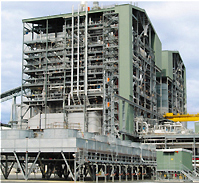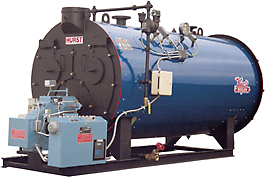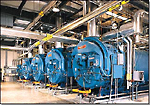
Man's and Nature's CO2
SOURCES and HOW NATURE IS DISPOSING (or SINKING) THEM:
At right is the
IPCC
(Intergovernmental
Panel on Climate Change) drawing that describes, in just a few numbers, all the
basic
dimensions of Global Warming.
It shows where Global Warming's carbon dioxide (CO2)
is coming from, where it is going, and how much is coming and going.
The numbers are in billions of metric tonnes of
carbon dioxide per year. (a tonne is 1,000 kilograms or 2,200 pounds).
The arithmetic goes like this: On the far
right, the oceans are putting 332 billion tonnes (or Giga tonnes or Gt) of
carbon dioxide into the air while taking out 338 Gt - making a net withdrawal from
the air of 6 Gt every year. Some of the carbon sinks to the bottom of the
oceans, becomes covered with mud and, over millions of years, might be turned
into oil.
In the middle, vegetation and mulch on the ground
are putting 439 Gt into the air while taking out 450 Gt - making a net withdrawal
from the air of 11 Gt every year. Some of the carbon becomes buried and,
over millions of years, might be turned into coal.
On the left, man is digging up coal, pumping oil,
and releasing as natural gas some carbon that didn't make it into oil.
Burning it all, man is putting 29 Gt of carbon dioxide into the air and not
removing anything. The arithmetic is simple 29 minus 6, minus 11,
leaves 12 left over to accumulate every year in the air like interest on money in a checking
account. This means Man is overwhelming Nature's ability to remove CO2
from the air by 12 billion metric tonnes (or 13 billion U.S. tons) per year.
Man is also cutting down more trees than nature can
cope with.
Not surprisingly, it is called "Land Use and Deforestation".
Massive amounts of carbon are available on Planet Earth. Over the last 150 years or so, an excess of well
over a trillion tons of extra CO2
has accumulated in the air, increasing the concentration of CO2
from 250 parts per million to today's level of about 380 parts per million.
Acting like a greenhouse's glass, CO2
is a gas that is very transparent to short wavelength energy - such as the white
light energy coming
directly in from the sun - but is more opaque to long wavelength energy such as the
infrared heat energy being radiated back out into the coldness of space by the
surface of planet earth.
How? What does this tell about both CO2
and methane? Look again and read carefully. More than they want you
to know about Global Warming?

FOSSIL FUEL'S CO2
SOURCE DIMENSIONS: The author obtained the coal, natural gas, and
oil CO2
amounts that man is putting into the air from another official IPCC diagram:
World Energy Flows. The sources and sinks for energy. (Click
on it to download a larger, printable pdf image.)
A similar diagram
for just the United States.
Please pay special attention to the three gray waste
bins in the left-center of the diagram. That's the CO2
from the fossil fuels man is burning. The different CO2
amounts man is dumping into the air are written on the waste bins.
This diagram uses 2004 data, the nature diagram uses
2007 data. The 2004 data is a bit smaller.

CO2
SOURCES and SINKS SIDE-BY-SIDE: Using the official IPCC numbers from
both of the above,
the author drew a pair of stacked bar charts (bar lengths proportional to the
amounts of CO2
they represent) showing where man is getting his CO2
sources and what nature is doing with the CO2 man is dumping into the air.
As they should, the stacked bars segments add up to the same total length.
(Nature's CO2
sources are not shown, only man's contribution and what Nature does with it.)
1. The 11 Gt going into land plants and the
ground (green bar) doesn't
seem to be hurting anything so its a "don't care".
2. The 6 Gt going into the oceans
(light blue bar) is making the oceans more
acidic since the CO2
is turning into carbonic acid that is harming most sea life.
The thickness dimension of Planet Earth's
blanket:
3. The 12 Gt going into the air
(red bar) is acting like the glass in a
greenhouse - letting heat from the sun in as it always has, but not letting
quite as much heat back out into the extreme cold of space as it used to.
More CO2
is like glass becoming more
intensely tinted
and thus trapping more heat as a consequence.
We know this is a threatening situation.
CO2 Truly is
a Heavyweight Greenhouse Gas .pdf

So, there it is.
Global Warming in a nutshell. You now know how much CO2
from each CO2
source Man is making, how that CO2
is being distributed among Nature's air, land plants, and oceans, and why increasing
the amount of CO2
in the air will increase Planet Earth's warmth which, in turn, changes
Planet Earth's climate.
Carbon dioxide and the other greenhouse gasses. (U.S. quantities.)
2/3 of the people on Planet Earth depend upon
agri-tech grains that, in turn, depend upon very predictable growing seasons.
This is why Global Warming is a threat.













